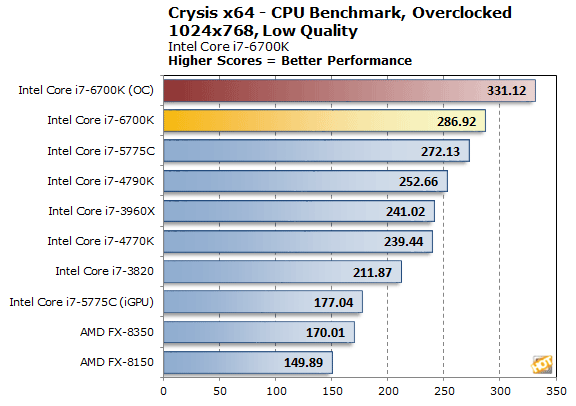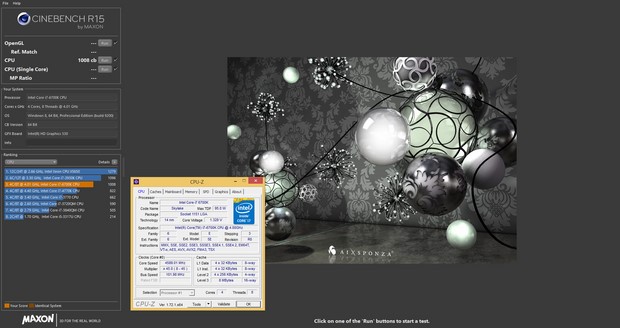Intel Core i7-6700K And Z170 Chipset Review: Skylake For Enthusiasts
We spent some time overclockng the Core i7-6700K as well, to see what kind of additional horsepower the processor had lurking under its hood.
|
Overclocking a Core i7-6700K processor is exactly the same as any other previous-gen Haswell or Ivy Bridge-based Intel K-SKU processor, with one additional wrinkle. Because the processor is unlocked, overclocking it is simply a matter of altering a few multipliers, tweaking a few voltages, and dealing with the heat. But because these new processors can also be overclocked by adjusting BCLK frequencies, it's possible to really fine tune the fine result--just like the "old days".
We took a conservative approach to overclocking the Core i7-6700K to give you all an approximate “worst case scenario”. Our results should be repeatable, assuming you’ve got similar hardware and everything is working properly. You shouldn’t need exotic cooling to pull off what we did here--we used a Cooler Master air-cooler with the motherboard and processor installed in a mainstream NZXT case.
To see what our sample could do, we manually cranked the core voltage up to 1.4v and shot right for 4.5GHz (45x100MHz),which worked without incident. We could actually get Windows to boot at higher clocks, but the CPU would overheat (over 92'C) and throttle under load with our air-cooling setup. After coming back down to 4.5GHz, we then bumped up the BCLK frequency slight and ultimately settled on just shy of 4.6GHz. At this speed the CPU was perfectly stable and operated in the upper 80-degree range when under load.

 We monitored temperatures while overclocked and saw what we'd consider slight improvements over older Haswell-based processors. With our particular setup, while overclocked, the CPU would idle right around the 35’C mark. But under 100% load, temps would shoot up to the high-80’C range rather quickly. With more powerful cooling, we’re sure a hardcore overclocker could get more out of the CPU--we're told 5GHz is possible on air with some samples, though most of the folks we've talked to are topping out at 4.6-4.7GHz.
We monitored temperatures while overclocked and saw what we'd consider slight improvements over older Haswell-based processors. With our particular setup, while overclocked, the CPU would idle right around the 35’C mark. But under 100% load, temps would shoot up to the high-80’C range rather quickly. With more powerful cooling, we’re sure a hardcore overclocker could get more out of the CPU--we're told 5GHz is possible on air with some samples, though most of the folks we've talked to are topping out at 4.6-4.7GHz.
While overclocked, we saw nice improvements in performance, as you can see in the Cinebench screenshot and Crysis data above. we should also mention that while overclocked, we went ahead and enabled XMP on the Corsair memory kit we used for testing and saw memory bandwidth jump up in the 32GB/s range with the RAM operating at 2666MHz.







